What You Ought to Know to Treat Joint Pain and For Better Joint Health
-
-
- How much exercise to ease your joint pain?
This will depend on your joint and health condition.
You need to work along the line that if you have moderate to severe joint pain, which can happen a day after your workout, if so, you should cut back the intensity of your workout. However, if you do have muscle aches after your workout, this can be considered quite common, as such, you need not worry too much about that. Moderate intensity exercise can improve your overall joint health and ease joint pain yet free you from worrying about risking joint injury.
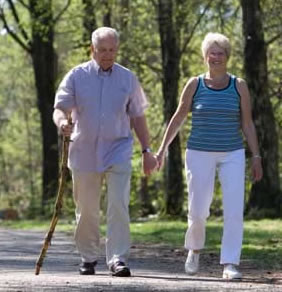
The sovereign invigorator of the body is exercise, and of all the exercises – Walking is the best.
~~ Thomas Jefferson ~~There is a “Talk Test” highly recommended by experts to help you draw the line. Here is how it works: If you can talk but not sing during an activity, it means that you are working at moderate intensity. On the other hand, when talking is difficult while doing your exercise – this is a sign that you are working at a higher intensity level than your joint allows. If so, you need to ease up if you have more joint pain than before you started the exercise. In addition, “heart rate” can also be used as a guide to determine your level of exercise intensity.
You should start with some gentle low-impact range of joint movement exercises such as “Walking”. As you progress and if your joint health condition permits, you may go for a more intense joint workout. Contrary to most people think, our joints require motion to stay healthy. Exercise is good for easing joint pain as it can help to improve our joint flexibility, build stronger muscle for better joint function, and to boost our mood as well as overall body healthiness.
It is advisable to stick to an exercise routine that you can happily work on a long-term basis even though they are moderate intensity exercise. Research has shown that putting too much pressure on a joint will contribute to joint damage in the long run.
- How much exercise to ease your joint pain?
-
What are the benefits can you expect from exercise?
Forget about when people say that if you have joint pain, exercise can aggravate your pain. Exercise has a host of benefits for treating joint pain and to your overall health if you do it correctly. Below are the benefits:- It is the most effective non-drug treatment for easing pain and in improving movement especially for people with osteoarthritis.
- It helps to maintain and improve flexibility in the joints with the range of motion or flexibility exercises. The joint movement will facilitate transporting nutrients and waste products to and from the material that protects and cushions the end of the bone, namely cartilage.
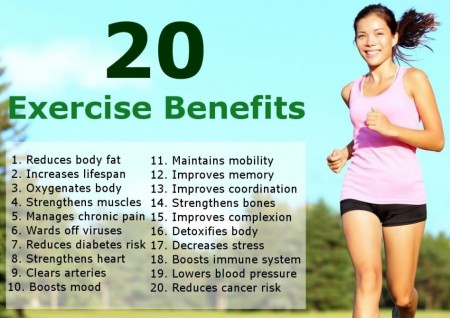
- Exercise can help strengthen the heart and make the lungs more efficient to fight fatigue and to build stamina. In fact, common aerobic exercise such as walking, jogging, bicycling and aquatic (water) help in controlling weight by increasing the amount of calories that the body uses.
- Exercise plays the role in maintaining and improving our muscle strength to support and to protect the joints that are affected by arthritis.
- Lowers the risk of fractures by stopping or slowing down the loss of bone mass.
- It helps to increase energy levels thus decreases depression and fatigue. Through exercise, you will experience improved oxygen delivery throughout your body compared to those who exercise less.
- It serves to improve your self-esteem and self-confidence.
Its other health benefits including:
- Decreased risk of cardiovascular (heart) disease, high blood pressure, and stroke.
- Decreased risk of colon and breast cancers.
- Decreased risk of diabetes.
- What exercise is considered best for joint pain?

Reaching for the sky is a simple exercise that is good for postural problems, back pain, neck pain, hemorrhoids, incontinence and stress relief.
There is no one size fit all joint pain treatment exercise program. What works for one may cause injury or joint damage to the other person because some exercises may be off-limits to them. As such, depending on your joint and fitness condition, doctors or experts’ advice should be sought. An effective and long-term joint pain treatment exercise program shall take into account the following factors for you to make an informed decision on the suitability of the form of exercises that can tailor to your own needs:
- the joints involved and the severeness of the pain.
- levels of joint inflammation.
- joint replacements.
- stability of joints due to pain or trouble walking after a fall.
- type of arthritis that can worsen the hips and knees condition.
- other physical body limitations such as blood clots, chest pain, chronic lung and cardiovascular disease, diabetes, heart palpitations, shortness of breath, high blood pressure, obesity and so on.
- What are the common workout mistakes to take note?
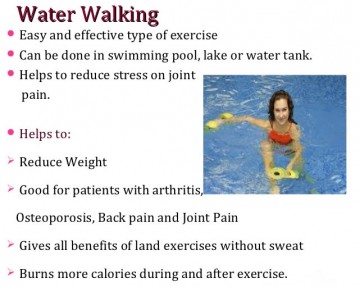
You need to exercise correctly to keep your joints strong and free from injury and undesirable stress. The following are the misconceptions and pointers for you to take note:-
- Warm-up – Do not treat this lightly as warming up before embarking on any joint treatment exercises will raise the body temperature and supply blood to loosen the muscles and joints to prevent injury. A simple march in place for a few minutes is enough, in this case.
- Stretching – Stretching can give your muscle the flexibility to prepare for exercise and is especially useful for dealing with joint stiffness. There are many stretching exercises that you can follow, “hamstring stretches” is one of them that you may want to try.
- Cool down – This will safely return you to your normal heart rate, blood pressure and breathing after a workout.
 The simple way to cool down is to walk slowly until your heart rate is 10 – 15 beats above your resting heart rate. Research showed that stopping too suddenly can cause serious reduction in blood pressure and is very dangerous to older people.
The simple way to cool down is to walk slowly until your heart rate is 10 – 15 beats above your resting heart rate. Research showed that stopping too suddenly can cause serious reduction in blood pressure and is very dangerous to older people. - Weight training – it is suggested not to start with the heaviest dumbbells first, rather, it is advisable to work on an incremental basis, i.e. to start at a weight point that makes you feel fatigued by the 12th repetition and not the other way round. Do not think that lifting too much and too soon are good to fast increase your energy and stamina. Research has shown that it may do more harm than good to your tissue by damaging it.
- The pain rule – If you experience more joint pain after your joint treatment exercise routine than before you started, it is likely that you may have overdone. If so you will have to ease up at your next workout. Bear in mind that a workout that is too intense will cause joint and tissue pain as a result of insufficient oxygen being pump into your body system. To find your ideal combination of activity and adequacy of oxygen, you need to know your “heart rate”. Research has shown that a heart rate above 40% can improve pain levels and help in weight loss.
- Eat for exercise – Never think to eat for exercise is good. To eat for exercise is not necessary because you do not need extra calories before your joint workout. In fact, eating for exercise will cause more blood flow concentrating on the digestion system instead of using them to warm up the muscles and to bring more oxygen to your body, this may cause cramps and nausea. It is suggested that we should stop eating 2 hours before an exercise. However, working out very hungry also does not do you any good as you need enough energy to last through a workout.

Image credit: ADAM, Inc.
- Drink enough water – we should drink enough “before, during, and after” a workout. Research showed that when we drink enough, we can prevent painful involuntary muscle spasms that sometimes occur during our joint treatment exercise. Water is the best choice to replenish body fluids compared to the so-called “Sports Drinks” and caffeinated beverages like coffee as most of them do not live up to be better than water and may raise blood pressure and reduce the blood flow to the active limbs.
- Body’s warning system – Stop to exercise immediately if you experienced chest pain, irregular heartbeat, unusual fatigue, nausea, unexpected breathlessness, or light-headedness while exercising. You should report the symptoms and consult your family doctor as soon as you can.
-
- What are the don’ts for lower body exercise?

This should be avoided or performed with caution to avoid injury to your hips, knees, ankles and feet.
Believe me, if you do it correctly, it will help you manage your joint pain more effectively and increase the flexibility of movement in your joint and muscle. Range-of-motion exercises such as yoga and tai chi that focus on flexibility, balance, and proper breathing are good for lower body health.
As a general rule, if you feel soreness in your joint that lasted more than two hours after your workout, you should adjust your joint pain treatment exercise regimen to avoid the possibility that the exercise may harm your joints. You may want to know an exercise that caused soreness in muscle is considered normal but not soreness in joint.
The following are some of the don’ts for the hips, knees, ankles and feet workout:
- Don’t walk for long distances without rest.
- Running.
- Squat with heavy weights.
- Pilates and yoga position that requires moving the leg away from the body.
- Sports such as basketball that involve jumping and quick change of direction.
- High impact exercise where both feet leave the ground at the same time like jumping rope.
- Walking on uneven surfaces, e.g. hiking trails, gravel.
- How to develop a well-rounded workout plan for better joint health?

Image credit: Urban Naturale
The key to develop a well-rounded workout plan for joint pain is to set a realistic goal and do it on a consistent basis to reap the benefits for long-term joint health. Your exercise time can be cumulative in that three 10-minute exercise sessions throughout a day are just as effective as a 30-minute session. Once you are comfortable with your existing exercise routine, you may start adding more time to your exercise regimen.
A well-rounded joint treatment workout will reward you with the following health benefits:
- Improved metabolism.
- Better mood.
- More energy.
- Increased stamina.
- Decreased inflammation to reduce joint pain and minimize arthritis symptoms.
- Increased bone density.
- Decreased risk of osteoporosis and fractures.
- Decreased joint stiffness and improve range of motion in joints.
Your workout plan shall include a mix of cardio, strength and stretching exercises. Your joint pain treatment exercise routine may include some of the following activities if not all:
Cycling – this low-impact aerobic exercise is a great way to improve the strength of your heart, hips and knees. The best part is that cycling can be done indoors in the winter months on a stationary bike, or outdoors when the air is warm and inviting. Do make sure your cycling equipment can be adjusted and adapted to your own physical limitations.
Swimming – this low impact joint exercise will have the buoyancy of the water takes pressure off your joints and helps you build the muscle strength to improve the joint function.
Walking – Although it is simple, safe and effective; however knowing where you walk is important too, i.e. stick to walk on a level ground in view that walking a hilly route is undesirable. If you prefer walking indoor, you may try an indoor mall or gym with a flat track.
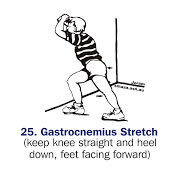 Lift light dumbbells – Weight training can increase your energy level and stamina, but just be careful not to overdo it as it may damage your tissue. Always start with light weight dumbbells and add more weight once that becomes easy to you.
Lift light dumbbells – Weight training can increase your energy level and stamina, but just be careful not to overdo it as it may damage your tissue. Always start with light weight dumbbells and add more weight once that becomes easy to you.Stand in a pool and push against water – it is especially beneficial for people who are heavy or who have advanced arthritis. A heated pool with its warm water will almost instantly relieve any painful joints.
Slow and controlled movements – Do some slow and controlled movements, and to concentrate on proper posture to prevent over extend your joints that can cause injury. This is especially important for people with rheumatoid arthritis (RA) or osteoarthritis (OA) due to the fact that exercise is bone on bone and there always exists a greater chance of injury.
Simple body movement – Simple body movement such as performing reaching for the sky or moving your toes can be beneficial to your joints.
Your well-rounded joint treatment workout shall also take into account the possible negative impact from the following:
- High-impact activities such as running (unless you have sought your doctor’s advice).
- Do not over exercise and/or train yourself too much such as lifting too much weight too soon, or performing too many exercises at the same time can be too taxing to your joints.
- How to exercise when you have rheumatoid arthritis?
It is not easy to motivate yourself to exercise if you have rheumatoid arthritis (RA) as joint ache and tiredness will put you off. Nevertheless, research has shown that people with rheumatoid arthritis (RA) who exercise regularly will see improvement in their joint pain and stiffness. This can lead to better joint mobility and muscle strength as well as can lower the risk of other health problems associated with RA such as heart disease and diabetes.
Water exercise is good for people with rheumatoid arthritis (RA).
The point here is to start slow and listen to your joints, say to give your joint a rest temporarily if a particular joint is seriously inflamed or if you have experienced muscle soreness and joint pain following a workout. In addition to that, you need to evaluate which of your joints are being affected. For example, if you have damage in the lower extremities such as around the hips, knees, ankles and feet — jogging and hard aerobics will be tough for you.
Before embarking on a joint pain treatment exercise program, it is wise to speak with some qualified medical professionals to work out a suitable joint treatment exercise program that is suited to your joint condition. Ideally, your exercise program shall take into account the following:
Aerobic exercise to strengthen your heart and lungs;
Strengthening exercise to make your muscles stronger to better support your joints; and
Stretching exercise to keep your muscles flexible to enable your joints to move freely.If you haven’t been active for a while, what you can do is to start “Slow” and do something that you feel comfortable at the beginning. As your joints become stronger and your endurance gets improved, you may exercise longer and work on more strenuous activities later.
In short, for rheumatoid arthritis, start with something basic such as walking and work your way up. Another form of exercise that people with rheumatoid arthritis (RA) can do is “Water Exercise”.
-

People with osteoarthritis can do different kinds of exercise to benefit the body but high-impact sports should be avoided.
What exercise works well for osteoarthritis (OA)?
Walking and Aquatic (water) exercise are the exercise that is considered good for people with osteoarthritis (OA).Reason being they are safe and easy to perform yet kind to your joints. Walking not only tones the muscles to slow down the loss of bone mass that supports the joints by reducing the risk of fracture, it also helps us to ward off heart disease, improve the blood circulation, and to lower down the blood pressure.
Aquatic or water exercise is not the same as swimming and it is especially good for people who are overweight with hip and knee osteoarthritis (OA). This water exercise is much easier and simpler to perform than swimming as it only requires you to stand in shoulder-height water. The water will act as a kind of resistance that can make your muscle become stronger and help to relieve the pressure off your body weight for the affected joints, particularly in the hips and knees.
Generally, people with arthritis should avoid high-impact sports such as jogging, tennis, and racquetball. This is because high-impact sports can put too much stress on your joints, particularly on the knees.
- What are the don’ts for upper body exercise?
Undeniably, exercise is proven to keep your joints in your upper body healthy and to ease your joints pain. However, you need to be aware that a joint might be variably affected due to your arthritis condition. As such, if an exercise movement causes pain or if you feel joint soreness (but not muscle soreness) that lasted more than two hours after your workout, it is time to re-look at your exercise regimen to prevent unintended damages to your joints. You may want to pay attention on the following:- Don’t bend over too far when riding a bike. Try cycle on a stationary or recumbent bike
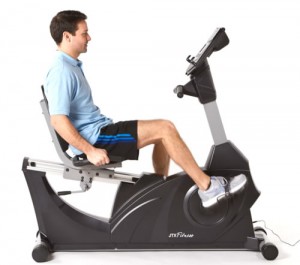 or riding a mountain bike that will keep you upright on level ground.
or riding a mountain bike that will keep you upright on level ground. - Be careful when you are involved in high-impact activities such as running and jumping.
- If you have damage in the upper body extremities, boxing and heavy weight lifting exercises must not be performed unless it is recommended by your doctors.
- Don’t lift weights above your waist if you have an issue with your lower back, and not above your shoulders if you have a joint issue in shoulder and neck.
- Don’t involve in certain yoga poses that support weight on the hands, arms and shoulders as they may worsen your shoulder joint condition.
- Don’t swim in the backstroke or freestyle if you have a joint issue in your shoulder and neck.
- Don’t involve in sports that make you arch or need to twist your back such as golf or tennis.
- Don’t bend over too far when riding a bike. Try cycle on a stationary or recumbent bike
- What are the exercise barriers and how to overcome them?
Although exercise is good for easing joint pain and for improving joint health for people with arthritis; however, research has shown that not more than 15 percent of men and women are getting the recommended 150 minutes of moderate-intensity workout in a week. To overcome the excuses or the barriers that make you skip the joint treatment exercise routine, the following exercise advice could help you sidestep the possible exercise hurdle:Lack of time – Contrary to popular belief, you do not need to set aside hours to exercise. According to experts, even if you can’t commit to make a 30-minute daily exercise, you still can improve your joint flexibility and stiffness, and ease your joint pain by breaking the 30-minute session to three 10-minute exercise sessions in a day. What is important is to commit yourself to consistently stick to an exercise regimen.

I am in too much pain – To keep you motivated, keep reminding yourself that the low-impact intensity exercise activities can ease the ache. One of the solutions is that you can use a heating pad or a relieving cream to soothe the joints, loosen the muscle and ease the stiffness and then follow with some basic stretching or light activities before your actual workout.
Fatigue – It may sound counter intuitive but according to research physical activity will increase blood and oxygen circulation throughout your body. This helps to trigger the release of hormones like endorphins that will make you more energetic, alert and feel good about yourself. To overcome the fatigue, you should cut half of your usual exercise activities and if that does not seem to help, it is time to give yourself a break. Remember, there is always another day as long as you are committed and is consistent with your set exercise regimen.
Boredom – It is quite common to have this feeling if you are alone in doing the exercise. A simple yet effective solution is to find a buddy or two. This works well because it is like engaging in a social activity with someone indirectly counting on you to make you less likely to skip your joint pain treatment exercise routine. Research has shown that those paired up with a partner tend to work out longer than when they are doing it alone. On the other hand, this will come in handy if safety and emergency arise.
Not seeing results – As we know, Rome is not built overnight. So don’t expect instant results, instead, you have to exercise on a regular basis in order to reap the health benefits. Always reminding yourself on how exercise can improve your joint health, relieve your joint pain and stiffness, can give you more energy and less stress which can lead you to better health, this I believe can serve as a motivating force to drive you to stick to your exercise routine.
Bad weather – To exercise does not mean you must do it outdoor. Malls or gyms with an indoor track or a heated pool where you can walk in water to benefit from its warm and buoyancy can all work to their wonder. If all the above is not possible, you can consider exercising at home. Depending on the form of exercise, a little space of say 6 x 8 feet shall meet most of your exercise needs.
- What type of exercise can help knee arthritis?
Knee arthritis is a wear and tear form of arthritis due to the breakdown of cartilage between the joints that causes the bones grind together painfully. You will be surprised to know that regular exercise can lessen and even to the extent of relieving knee pain and its associated symptoms. There are two safe, simple yet effective joint exercises that are good for knee arthritis.Walking is recommended due to it is a low-impact and a weight-bearing exercise. Regular walking will help strengthen your muscles to support your joints and to absorb shock and build bone. Low-impact exercises are good because they do not cause stress on the joints yet help to increase flexibility and strength. What you need to do is to find and wear sturdy shoes and to start out slow. After some time, you may gradually increase your walking pace and distance for greater health benefits.

Image credit: NHS Choices
Water exercise is superb to build muscle strength and to improve knee flexibility. The reason it is recommended for knee arthritis is that the weight impact is lessened to near zero which is good for those who are heavy weight. You may perform the water exercise by walking in the shallow end of a pool or by attending water exercise classes at your local community center or in a gym. Research also showed that the warm water of a heated pool will almost instantly relieve painful joints.
- Are there any specific exercise guidelines to follow?
Research has shown that about fifty percent (50%) of the people who begin an exercise program drop out within a year. To ensure this does not happen to you, what you need is to find an exercise program that you find enjoying and can consistently adhere to in the long run.Be consistent – To see the results and reap the health benefits of the exercise, you will have to do it on a regular preferably daily basis unless your joint condition (i.e. pain, swelling, inflammation) does not permit then you would need to take a break but with a desire to continue at other time once you are fit.
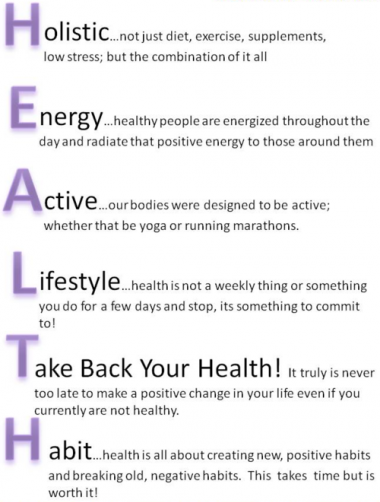
Image credit: Debbie Stevenson
Build up gradually – Start small and set realistic and attainable goals to get you moving. A three 10-minute exercise is as good as a non-stop thirty-minute workout. Also, if performing an exercise that needs 10 repetitions is too taxing to your joints, you may reduce the number of repetitions. Remember, too much exercise at the beginning may worsen your joint condition. Research has shown that a good exercise program should be one that starts at a low intensity and gradually builds up as your body permits.
Pick the right time – Studies have shown that if you pick the right time to exercise, you will enjoy more and much immersed in the activities. Therefore, choose a time when your symptoms are least distressing, i.e. when joint pain and stiffness are at a minimum, or when you are not too tired. For example, if you are most stiff when you wake up, don’t force yourself to exercise then or if you are too tired in the evening, you may choose to exercise the next morning. It is all your preference, nothing is carved in stone!
Check with experts – Always check with the doctor and physical therapist for advice to prevent undesirable complication to your joints. They will be able to guide you with customized joint exercise solutions to suit your health condition.
Joint feels hot – if this happened to you, it is hinting to you to stop your exercise until the symptom is over. If your joints are hot or swollen, continue to exercise can cause damage, according to Jessie Jones, PhD, professor of kinesiology and health promotion, California State University-Fullerton.
Listen to your body signals – If you feel a certain amount of discomfort at the beginning while exercising, it is considered normal especially for those who seldom exercise. However, should you experience pain that lasted two hours or more from your exercise, it is advisable to scale down your exercise as the joint exercise that you are undertaking might be too intense for you. If so, you should have fewer repetitions or change to another less intense joint treatment exercise activity. The key is not to overdo it when your body tells you otherwise and know when to take a rest.
Know what to wear – the basic and most important thing you need is a pair of comfortable and supportive shoes. It is wise to spend some time to pick one that fits your needs, i.e. walking shoe is best not to use for running purposes although it might serve your needs sometimes.
Clothing – Generally, loose-fitting clothing such as t-shirt, cotton shorts, sweatshirts and sweatpants can all be acceptable for your exercise routine. However, you may consider form-fitting and perspiration-wicking attire if you know you will be sweating a lot or to avoid getting caught on the moving parts in the gym.
- What caused joint pain?

Image credit: SeeDoc
Joint pain can be described as a dull, sharp, burning sensation or it can be a tight feeling sensation that you feel in your joints. Pain can be classified into acute pain or chronic pain. Acute pain is a short-term problem and the pain can last from a few seconds to a few weeks and then go away. On the other hand, chronic pain is long lasting which can run from three to six months to a lifetime. Unfortunately, most arthritis pain is a chronic pain due to the ongoing inflammation and the damage to the affected joints and bones.
The factors that caused joint pain can be any of the following:
- When the tissue in the joint is inflamed, this is common for those with rheumatoid arthritis and psoriatic arthritis.
- The wear and tear due to the depletion of cartilage and the lubricating fluid in the joint, the result of which causes the bones rubbing against one another when we move. This happens to people with osteoarthritis.
- The buildup of uric acid crystals in the joint which caused inflammation, this is common in the case of gout.
- What is arthritis and the joint pain associated with arthritis?
Arthritis is a condition and a disease that causing pain and swelling in your joints. The pain, swelling and stiffness will develop over time and can be felt and start at the hands or the feet, or it can be at the knees and the hips. You will experience movement difficulty due to the stiffness and soreness in your joints and is especially obvious whenever your blood circulation is slow such as like when waking up or when you have sitting in one posture for awhile. Pain and redness are both caused by inflammation and the symptoms may come and go or it may last a lifetime for the severe case. A certain type of arthritis can lead to problems in other organs like the eyes, mouth, lungs or the skin. You may want to know joints are where two bones meet with bones connected and held together with soft tissue called ligaments. (click to go back to where you come from.)
Image credit: Roman Paradigm Massage & Therapy
Osteoarthritis (OA, is widely known as a degenerative joint disease) – the pain can range from mild to severe pain of which movement in the affected joints is difficult and painful. This happened when the protective cartilage and fluid inside the joint breakdown due to years of use or injury.
Cartilage is the slippery tissue that covers the ends of the bones in a joint and serves to absorb the shock of movement. When you lose cartilage, the result is that bones will rub directly against one another when movement is involved thus causing inflammation from this constant and painful friction. Over time, this rubbing can permanently damage the joint’s normal shape, with the possibility that bone spurs may grow on the edges of the joints and that small pieces of bones or cartilage can break off and float in the joint space which can cause even more pain and damage.
Factors that cause Osteoarthritis include overweight, getting older, and joint injury. OA often affects knees, hips, hands and the spine although it may not affect the same joint on both sides of the body. (click to go back to where you come from.)

Image credit: MedicineNet, Inc
Rheumatoid arthritis (RA) – flare of pain is the result caused by the sudden onset of severe inflammation and it can last for days or weeks. In RA the joints are attacked by the body’s own immune system where healthy tissue and the lining of the joints called synovium are affected that resulted in severe, chronic inflammation in the affected joints that can spread to the whole body.
Rheumatoid arthritis is different from osteoarthritis as it is more commonly happened in older age and usually more women than men will get RA. Unlike OA, it typically affects the joints on both sides of the body such as on both knees and hands. RA may also affect internal organs like the liver, heart, spleen and eyes. For children, RA is called juvenile idiopathic arthritis (JIA).

Psoriatic arthritis symptoms can be mild and develop slowly or occur suddenly and be severe. Image credit: Liberate Ideas Inc
Psoriatic Arthritis (PA) – it can affect any joints in the body, including tendons, fingers and toes. The affected joints will become swollen thus caused tenderness or pain in the connective tissue resulting in pain, stiffness and swelling in the joints. Lower back pain is quite common in PA. PA is a form of the immune system attacking joints that caused inflammation and pain.
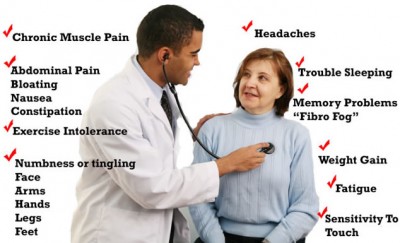
Fibromyalgia symptoms… what are yours? Image credit: Denali Healthcare
Fibromyalgia – is a widespread musculoskeletal pain and the pain may come and go or it may remain constant. The areas of the pain are often near joints and the pain may migrate from one area of the body to the next, i.e. from neck to shoulders and then to elbows. In fibromyalgia, chemicals that transmit signals between nerve cells (called neurons) are out of balance thus causing the brain to sense pain more intensely with the affected areas become very sensitive to touch and prone to intense pain as well.

Individual with gout
Gout – is most common in men and is characterized by attacks that occur when crystals deposit in the joints. This is a situation when the body is not able to remove uric acid quickly enough from foods or when the body produces too much uric acid that resulting excess uric acid form crystals in the joint. Gout will cause painful joint swelling and inflammation, and the pain can develop and intensify over time, excruciating pain is observed when flare strikes. Gout usually strikes in the large joint of the big toe, in your foot, ankle, knees and other joints.
Other arthritis-related diseases that cause joint pain include:
- Ankylosing Spondylitis – it typically affects the spine and the joints of the pelvis. It causes pain and stiffness from the neck down to the lower back.
- Polymyalgia Rheumatica – is an infrequently occurring, inflammatory condition that causes pain or aching in the large muscle groups, especially around the shoulders and hips. This disease affects people over 50 years old and the aches and stiffness are noted most severely in the morning.
- Tendinitis and Bursitis – Bursitis and tendinitis are both common conditions that cause swelling around muscles and bones of which the connective tissues and the cushioning joint components become inflamed and painful. They occur most often in the shoulder, elbow, wrist, hip, knee or ankle.
- Lupus – is a chronic, autoimmune disease that can damage any part of the body (i.e. skin, joints, and/or organs inside the body). Its inflammation can cause pain, stiffness, and visible swelling in your joints, particularly in the morning.
- How to track Heart Rate?
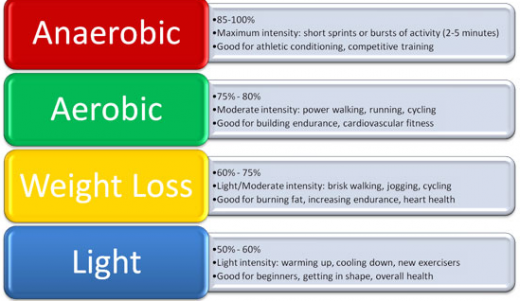
Image credit: Baker Academy
Measure heart rate is important for any fitness program as it provides you with a heart rate to target. With your heart rate measurement, you can make sure you are not working too hard especially for those who have joint pain and joint problems. For beginners, it is recommended to target a heart rate at 50%, and gradually increase it to 75% after some time for greater health benefit provided their joint condition allow them to do so.
Here are the steps on how you can manually calculate your heart rate.
Step 1: Subtract your age from 220 to give you your maximum heart rate per minute. For example, if you are 60 years old, your maximum heart rate per minute will be 160 (i.e. 220 – 60 = 160).
Step 2: Multiply 160 by .50 to give you 50% of your target heart rate. In this case, it will be 80 beats per minute. What is your 75% target heart rate? The correct answer should be 120 beats per minute, derived from multiplying 160 by 75%.
Besides the above manual calculation, you can also find your heart rate number by wearing a heart rate monitor or you can determine your heart rate by counting your pulse. To count by using pulse, you could press the first two fingers of one hand gently down on the inside of the wrist, alternatively is to press the fingers under the jaw on the right or left side of the front of your neck. Each faint pounding as you feel tells you that your blood is passing through the artery and each pounding is a beat.
-
Best,
Tan Kok Hui
Nutrition Made Simple, Life Made Rich







Leave a Reply